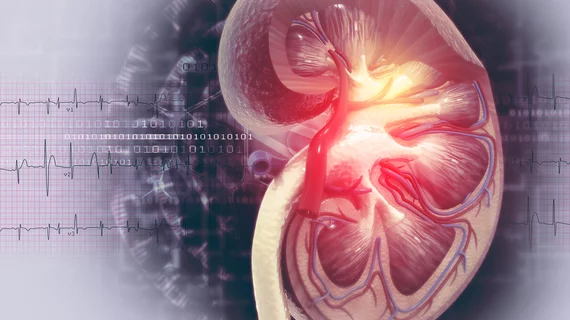5 new payment models proposed for kidney care
HHS and CMS are following through on an executive order from President Trump to overhaul kidney care in the nation by proposing five new payment models.
Trump signed an executive order July 10 called Advancing American Kidney Health, which aims to improve the lives of Americans with kidney disease by reducing costs and expanding care options. The government wants to reduce ESRD 25% by 2030.
The new proposed models will change the current Medicare payment system that encourages in-center hemodialysis as a default treatment for patients who are just starting dialysis. This type of treatment was used in 88% of dialysis patients in 2016, according to the Government Accountability Office. About 37 million Americans suffer from chronic kidney disease. More than 430,000 Medicare fee-for-service beneficiaries with end-stage renal disease spend an average of 12 hours per week getting this treatment, and many of them have poor outcomes as a result from other underlying disease complication and co-morbidities.
“Decades of paying for sickness and procedures in kidney care, rather than paying for health and outcomes, has produced less-than-satisfactory outcomes at tremendous cost,” HHS Secretary Alex Azar said in a statement. “Through new payment models and many other actions under this initiative, the Trump Administration will transform this situation and deliver Americans better kidney health, more kidney treatment options, and more transplants.”
The five proposed models include:
- ESRD Treatment Choices (ETC) model
- Kidney Care First (KCF) model
- Comprehensive Kidney Care Contracting (CKCC) Graduated model
- CKCC Professional model
- Global models
- The ETC model provides more flexibility in treatment options and encourages at-home dialysis care, with CMS payment adjustments to encourage ESRD facilities and clinicians that kidney care beneficiaries have access to and education about their treatment options. These payment adjustments would begin Jan. 1, 2020, and end June 30, 2026, under the proposal.
The other four optional models are designed to help healthcare providers reduce the cost and improve the quality of care provided to Medicare beneficiaries with late-stage chronic kidney disease and ESRD. They encourage kidney transplant and delay the need for dialysis. The models would run from Jan. 1, 2020 through Dec. 30, 2023, with optional additional performance years.
The proposals come more than two years about HBO’s John Oliver blasted the kidney care industry for their attitude toward patients, including providers discouraging patients to get a transplant to continue in-facility dialysis.
The president’s executive order also directs HHS to conduct a number of other actions, including:
- Launching a public awareness campaign about kidney disease
- Reforming the organ procurement and management system
- Expand support for living donors through compensation
- Encourage development of wearable or implantable artificial kidneys
- See the proposed models here.

